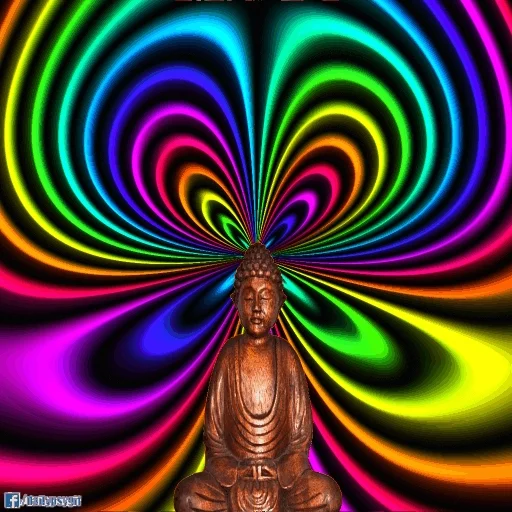LESSON 3286 WED 26 Feb 2020
from
Dr B.R.Ambedkar thundered “Main Bharat Baudhmay karunga.” (I will make India Buddhist)
All Aboriginal Awakened Societies Thunder ” Hum Prapanch Prabuddha Bharatmay karunge.” (We will make world Prabuddha Prapanch)
Introduction
Thus have I heard:
On
one occasion, the Bhagavā was staying among the Kurus at Kammāsadhamma,
a market town of the Kurus. There, he addressed the bhikkhus:
– Bhikkhus.– Bhaddante answered the bhikkhus. The Bhagavā said:
–
This, bhikkhus, is the path that leads to nothing but the purification
of beings, the overcoming of sorrow and lamentation, the disappearance
of dukkha-domanassa, the attainment of the right way, the realization of
Nibbāna, that is to say the four satipaṭṭhānas.
Which four?
Here, bhikkhus, a bhikkhu dwells observing kāya in kāya, ātāpī
sampajāno, satimā, having given up abhijjhā-domanassa towards the world.
He dwells observing vedanā in vedanā, ātāpī sampajāno, satimā, having
given up abhijjhā-domanassa towards the world. He dwells observing citta
in citta, ātāpī sampajāno, satimā, having given up abhijjhā-domanassa
towards the world. He dwells observing dhamma·s in dhamma·s, ātāpī
sampajāno, satimā, having given up abhijjhā-domanassa towards the world.
I. Kāyānupassanā
A. Section on ānāpāna
And
how, bhikkhus, does a bhikkhu dwell observing kāya in kāya? Here,
bhikkhus, a bhikkhu, having gone to the forest or having gone at the
root of a tree or having gone to an empty room, sits down folding the
legs crosswise, setting kāya upright, and setting sati parimukhaṃ. Being
thus sato he breathes in, being thus sato he breathes out. Breathing in
long he understands: ‘I am breathing in long’; breathing out long he
understands: ‘I am breathing out long’; breathing in short he
understands: ‘I am breathing in short’; breathing out short he
understands: ‘I am breathing out short’; he trains himself: ‘feeling the
whole kāya, I will breathe in’; he trains himself: ‘feeling the whole
kāya, I will breathe out’; he trains himself: ‘calming down the
kāya-saṅkhāras, I will breathe in’; he trains himself: ‘calming down the
kāya-saṅkhāras, I will breathe out’.
Just as, bhikkhus, a
skillful turner or a turner’s apprentice, making a long turn,
understands: ‘I am making a long turn’; making a short turn, he
understands: ‘I am making a short turn’; in the same way, bhikkhus, a
bhikkhu, breathing in long, understands: ‘I am breathing in long’;
breathing out long he understands: ‘I am breathing out long’; breathing
in short he understands: ‘I am breathing in short’; breathing out short
he understands: ‘I am breathing out short’; he trains himself: ‘feeling
the whole kāya, I will breathe in’; he trains himself: ‘feeling the
whole kāya, I will breathe out’; he trains himself: ‘calming down the
kāya-saṅkhāras, I will breathe in’; he trains himself: ‘calming down the
kāya-saṅkhāras, I will breathe out’.
Thus he dwells observing
kāya in kāya internally, or he dwells observing kāya in kāya externally,
or he dwells observing kāya in kāya internally and externally; he
dwells observing the samudaya of phenomena in kāya, or he dwells
observing the passing away of phenomena in kāya, or he dwells observing
the samudaya and passing away of phenomena in kāya; or else,
[realizing:] “this is kāya!” sati is present in him, just to the extent
of mere ñāṇa and mere paṭissati, he dwells detached, and does not cling
to anything in the world. Thus, bhikkhus, a bhikkhu dwells observing
kāya in kāya.
इस प्रकार मैंने सुना है:
एक अवसर पर, भगवती कौरवों के बाजार कस्बे कम्मसधम्मा में कौरवों के बीच रह रही थी। वहाँ, उन्होंने भिखुओं को संबोधित किया:
- भीखसु.- भदंते ने भीखुओं का जवाब दिया। भगवान ने कहा:
-
यह, भिक्खु, वह मार्ग है जिसके कारण प्राणियों की शुद्धि, दुःखों और
विलापों पर काबू पाने, दुक्ख-अधिमानस का लोप हो जाता है, सही मार्ग की
प्राप्ति, निबाण की प्राप्ति, अर्थात् चारों का बखान करना satipaṭṭhānas।
कौन
से चार? यहाँ, भिक्खु, एक भिक्खु लोग काया, ātāpī सम्पतजनो, सतीमा, में
अभिजात-अधिमानस को संसार की ओर देखते हुए रहते हैं। वह वेदान में वेदना,
सत्पद सनाज्नो, सतीमा का पालन करता है, जिसने दुनिया के प्रति
अभिजात-अधिमान को त्याग दिया है। वह दुनिया में अभिजात्य-अधिनायकत्व को
छोड़ते हुए, सिरता, सतपद, सत्यम, में सीता को देखता है। वह धम्म · s, धर्मा
संप्रजनो, सतीमा, में दुनिया के प्रति अभिजात-अधिमान को त्यागते हुए धम्म
का पालन करता है।
आई। क्यानुपासना
ए āāāpāna पर धारा
और
कैसे, भिक्खु, क्या भिक्षु काया में दर्शन करते हैं? यहाँ, भिक्खु, एक
भिक्षु, जंगल में चला गया है या एक पेड़ की जड़ में चला गया है या एक खाली
कमरे में जा रहा है, पैरों को मोड़कर नीचे बैठता है, काया को सीधा खड़ा
करता है, और सती की परिक्रमा लगाता है। इस प्रकार से सातो वह सांस लेता है,
इस प्रकार वह सातो सांस लेता है। लंबे समय तक साँस लेना वह समझता है: ‘मैं
लंबी साँस ले रहा हूँ’; लंबी सांस लेना वह समझता है: ‘मैं लंबी सांस ले
रहा हूं’; सांस लेने में वह समझता है: ‘मैं छोटी सांस ले रहा हूं’; सांस
लेने में तकलीफ वह समझता है: ‘मैं छोटी सांस ले रहा हूं’; वह खुद को
प्रशिक्षित करता है: ‘पूरे काया को महसूस कर, मैं साँस लूंगा’; वह खुद को
प्रशिक्षित करता है: ‘पूरे काया को महसूस कर, मैं सांस लूंगा’; वह खुद को
प्रशिक्षित करता है: ‘काया-सुखों को शांत करते हुए, मैं साँस लूंगा’; वह
खुद को प्रशिक्षित करता है: ‘काया-साक्षरों को शांत कर, मैं सांस लूंगा’।
जैसे,
भीखुश, एक कुशल टर्नर या एक टर्नर की प्रशिक्षु, एक लंबी बारी, यह समझता
है: ‘मैं एक लंबा मोड़ बना रहा हूं’; एक छोटा मोड़ बनाने के बाद, वह समझता
है: ‘मैं एक छोटा मोड़ बना रहा हूँ’; इसी तरह, भिक्खु, एक भिक्षु, लंबी
सांस ले रहा है, समझता है: ‘मैं लंबी सांस ले रहा हूं’ लंबी सांस लेना वह
समझता है: ‘मैं लंबी सांस ले रहा हूं’; सांस लेने में वह समझता है: ‘मैं
छोटी सांस ले रहा हूं’; सांस लेने में तकलीफ वह समझता है: ‘मैं छोटी सांस
ले रहा हूं’; वह खुद को प्रशिक्षित करता है: ‘पूरे काया को महसूस कर, मैं
साँस लूंगा’; वह खुद को प्रशिक्षित करता है: ‘पूरे काया को महसूस कर, मैं
सांस लूंगा’; वह खुद को प्रशिक्षित करता है: ‘काया-सुखों को शांत करते हुए,
मैं साँस लूंगा’; वह खुद को प्रशिक्षित करता है: ‘काया-साक्षरों को शांत
कर, मैं सांस लूंगा’।
इस प्रकार वह काया में आंतरिक रूप से देख रहा
है, या वह काया में बाह्य रूप से देख रहा है, या वह काया में आंतरिक और
बाह्य रूप से देख रहा है; वह काया में अनुभूतियों के समुदय का अवलोकन करता
है, या वह काया में घटना के निधन का निरीक्षण करता है, या वह साम्य का
अवलोकन करता है और काया में अनुभूतियों से गुजरता है; वरना, [साकार:] “यह
क्या है!” सती उसके पास मौजूद है, केवल ñā anda और मात्र pa himissati की
सीमा तक, वह अलग रहता है, और दुनिया की किसी भी चीज़ से नहीं चिपकता है। इस
प्रकार, भिक्खु, एक भिक्षु काया में काया का निरीक्षण करते हैं।


